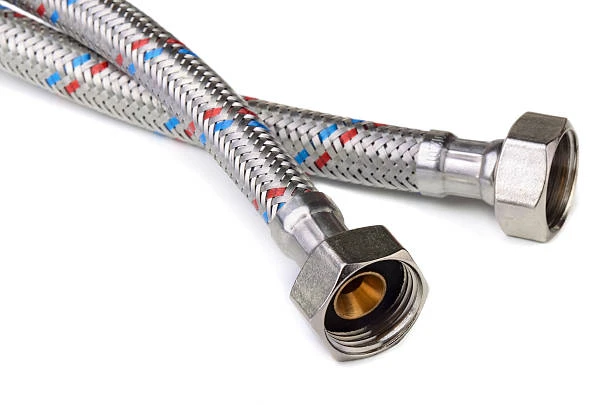
Introduction
Reinforced braid hoses have undergone significant advancements in materials, design, and manufacturing, making them indispensable across industries like automotive, aerospace, medical, and industrial automation. These hoses, featuring a multi-layered structure—inner tube, braided reinforcement, and protective outer cover—now integrate smart technologies, sustainable materials, and application-specific customizations. The global market is projected to grow at a 5-7% CAGR from 2025 to 2033, driven by demand in electric vehicles, medical devices, and high-pressure industrial systems. This article explores their development, key characteristics, industry applications, and answers critical questions about their future.
Basic Definition and Characteristics
A reinforced braid hose consists of three core layers:
- Inner Tube: Made from rubber, PVC, PTFE, or silicone, ensuring compatibility with fluids (water, oil, chemicals, or gases).
- Reinforcement Layer: Braided polyester, nylon, or stainless steel wire for tensile strength and burst resistance.
- Outer Cover: Protects against abrasion, UV rays, and chemicals, often using thermoplastic or synthetic rubber.
Key Innovations in Development:
- Smart Hoses: Embedded IoT sensors monitor pressure, temperature, and wear in real-time, enabling predictive maintenance.
- Lightweight Materials: Aerospace and EV sectors demand thinner, high-strength hoses to reduce weight and improve efficiency.
- Eco-Friendly Solutions: Bio-based silicones and recyclable materials align with sustainability goals.
- Specialized Coatings: Antimicrobial liners for medical use or chemical-resistant layers for industrial applications.
Industry Applications and Growth Drivers
1. Automotive & Electric Vehicles (EVs)
- EV Thermal Management: Silicone braided hoses with platinum curing are critical for battery cooling systems, handling extreme temperatures.
- Fuel and Brake Systems: Steel-braided hoses minimize expansion under high pressure, ensuring safety in performance vehicles.
2. Medical and Pharmaceutical
- Biocompatible Tubing: Medical-grade silicone hoses with multi-braid reinforcement meet FDA and ISO 10993 standards for drug delivery and surgical devices.
- Single-Use Hoses: Disposable designs reduce contamination risks in sterile environments.
3. Aerospace and Defense
- Hydraulic and Fuel Lines: Lightweight, fire-retardant hoses withstand extreme temperatures and vibrations in aircraft.
4. Industrial Automation
- High-Pressure Hydraulics: Steel-braided hoses (up to 6,000 PSI) are used in construction and manufacturing machinery.
- Chemical Transfer: PTFE-lined hoses resist corrosive acids and solvents.
5. Food and Beverage
- Sanitary Hoses: FDA-compliant PVC or silicone hoses ensure hygiene in dairy and beverage processing.
FAQs (Frequently Asked Questions)
1. What are the latest material advancements in reinforced braid hoses?
Manufacturers now use bio-based silicones, PTFE liners, and high-strength polymers to enhance durability and environmental sustainability.
2. How do smart hoses improve industrial operations?
IoT-enabled hoses provide real-time data on pressure and wear, reducing downtime through predictive maintenance.
3. Which industries are driving market growth?
EVs, medical devices, and aerospace sectors are key growth areas due to demands for high-temperature resistance and lightweight solutions.
4. Are there eco-friendly options for braided hoses?
Yes, recyclable silicone and biodegradable materials are gaining traction, especially in Europe under EU Green Deal regulations.
5. What is the future outlook for reinforced braid hoses?
The market is expected to grow at 5-7% CAGR, with innovations in miniaturization, sensor integration, and customized designs leading the way.
Conclusion
Reinforced braid hoses have evolved from simple fluid transfer components to high-tech, application-specific solutions. Innovations like smart sensors, lightweight materials, and sustainable manufacturing are reshaping industries from EVs to medical devices. As global demand rises for durable, efficient, and eco-friendly hoses, manufacturers must focus on R&D, regulatory compliance, and customization to stay competitive. Whether for aerospace hydraulics or sterile pharmaceutical transfers, these hoses will continue to play a vital role in modern engineering and industrial progress.







